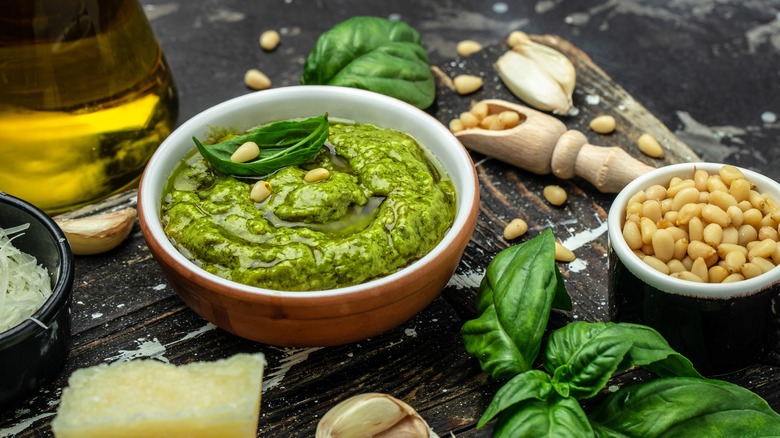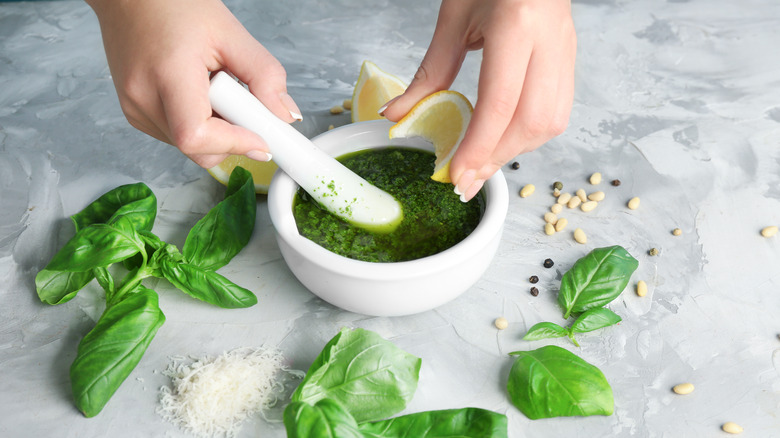The Simple Way To Stop Your Pesto From Browning
The fresh kick from the herbs, the beautiful bright green color, and the delicious flavor are among the top reasons many of us love pesto so much. This condiment is incredibly easy to whip up — if you can blitz ingredients in a food processor or blender, you can make pesto — yet it pairs well with such a wide range of dishes from pasta and pizza, to eggs or salads. But once you've processed your homemade pesto, it's quite disappointing that, within no time, the condiment starts to lose its vibrant green hue and turns brown. While that doesn't necessarily mean the sauce has gone bad, the appearance can be so unsettling that you might reconsider indulging in the spread altogether. Thankfully, there's a way to prevent this: adding lemon juice to the mixture.
Do this during your pesto-making process while mixing the different ingredients. As you put your nuts, garlic, and seasoning into the food processor, add the lemon juice before pulsing — you'll need about 4 teaspoons of this acidic juice per 2 cups of basil. Next, add the basil as usual (and any other herbs you like) and pulse again. Finish off with the remaining ingredients, like olive oil and parmesan cheese, and pulse until everything is well combined. With that, your pesto will retain its pleasant green color for a longer time. In case you're concerned about the taste, don't worry, lemon juice adds a subtle yet delightful tang to this Italian sauce.
How the lemon juice hack works
To explain how this simple lemon juice hack works, we first need to address what causes the browning of pesto. The ingredient in pesto that browns is actually basil. As this herb is cut or crushed and exposed to oxygen, an enzyme called polyphenol oxidase, which is naturally found in the plant, is activated and triggers an oxidation reaction. This reaction converts monophenol compounds in the basil, which are colorless to polyphenols, which are black or brown in color, hence the browning effect you see in your pesto.
Now, for the polyphenol oxidase enzyme to work optimally, it requires an environment with a neutral pH of around 5 to 7. So by adding lemon juice that contains citric and ascorbic acids, you're lowering the pH to about 2. This acidic environment renders the enzyme inactive so no oxidation can occur to cause browning. This is the same thing that happens with apples, bananas, potatoes, and other fruits and vegetables you've seen turning brown after cutting.
This trick, however, is only applicable if you're making the pesto yourself because you have the chance to add lemon juice during blending. So what do you do if you have store-bought pesto? Once you open the jar, use the olive oil trick to stop leftover pesto from turning brown. This method works because the thin layer of oil added on top of the pesto limits the condiment's exposure to oxygen.

